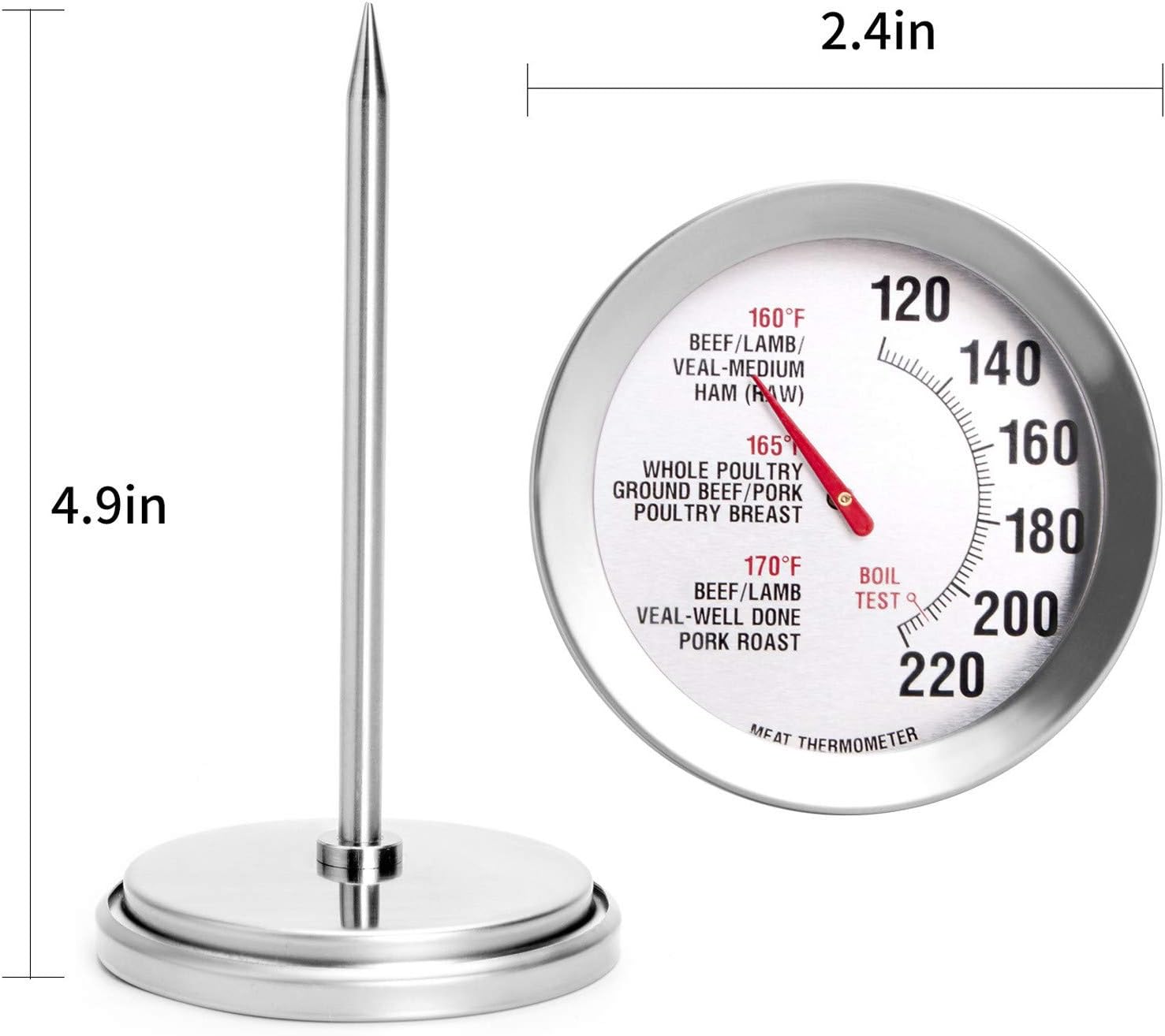Page Contents
- 1 Details: Roasting Meat Thermometer T731 Oven Safe Large 2.5-Inch Easy-Read Face QC1
- 2 Advantages
- 3 Notice
- 4 Buyer Guide meat thermometer
- 5 How to choose meat thermometer
- 6 How to maintain meat thermometer
- 7 Review COMSOON Digital Meat Thermometer, Instant Read Cooking Thermometer with Dual Probe, Kitchen F...
- 8 Review OXO Good Grips Chef's Precision Analog Leave-In Meat Thermometer,Silver,1 EA
- 9 Review SmartHomes Digital Meat Cooking Thermometer - Ideal Oven Temperature Probe For Food, Grill, B...
- 10 Review hudiemm0B Meat Probe Thermometer, Meat Thermometer Kitchen Digital Cooking Food Probe Electro...
Details: Roasting Meat Thermometer T731 Oven Safe Large 2.5-Inch Easy-Read Face QC1
Brand: Cafuvv
Advantages
- Products can be returned
- Roasting’s Meat Thermometer accurately reads internal temperat
- ure to cook meat properly red moveable target temperature indi
- ator into thickest part of the meat without touching the
- one, slide red indicator to target temperatureHelps ensure foo
- d safety for roasting, grilling, rotisserie, and slow cooking
Notice
- Is an online purchase
- Delivery may be delayed in some areas.
Buyer Guide meat thermometer
If you’re shopping for a meat thermometer, this guide will give you all the information you need.- Type of thermometer needed. Meat thermometers can come in many types.
- Digital or Analog? Digital thermometers are more versatile. They allow you to monitor temperatures remotely from your smartphone. The downside is that digital thermometers cost around $30. Analog thermometers are cheaper, but you may need a meat probe to place in the meat.
- Room Temperature. If you plan on using your thermometer in your refrigerator or freezer, make sure the thermometer is accurate to 0?F. Otherwise, the thermometer may not give you accurate readings at all.
- Probe. A meat probe can be attached to your meat. The probe has a temperature probe that connects to the thermometer.
- Probe Size. Different probes have different diameters. The larger the probe, the thicker and more direct contact with your meat it will provide.
- Thermometer. Most meat thermometers come with 3 to 5 probes.
- Battery. Some thermometers use batteries. Some use an AC adapter.
- Cost. Most meat thermometers cost around $10-$30.
How to choose meat thermometer
When shopping for a meat thermometer, there are a few factors to keep in mind:- What temperature are you looking to store? Meat thermometers store temperature in one of two ways: Fahrenheit or Celsius. Some options also store temperature in degrees Kelvin.
- What size are you looking for? Meat thermometers come in a wide range of sizes, ranging from 2 inches to 2 feet. The size you choose will largely depend on how much meat you need to cook, and your storage needs.
- How accurate is the thermometer? Accuracy varies widely between meat thermometers. Some higher-end units have features like colored lights that indicate different levels of doneness. Some higher-end options also store temperature in degrees Kelvin.
How to maintain meat thermometer
If you eat a lot of meat, a good meat thermometer is an essential kitchen tool. You can use a meat thermometer to check the internal temperature of any meat youre cooking.- Use a digital meat thermometer if youre only cooking for one or two people. Digital thermometers have small screens that show the temperature reading, and a digital readout makes it easy to set and retrieve a precise internal temperature. If youre cooking meat for a larger group, a digital meat thermometer may not be the best option.
- Use a meat thermometer with a probe. A probe-style meat thermometer allows you to insert the tip of the thermometer directly into the meat. These thermometers are a bit more delicate than digital meat thermometers, so its important to handle the probe with care.
- Wash your meat thermometer. Before storing your meat thermometer, be sure to wash it with hot, soapy water to remove any leftover food particles.
- Store your meat thermometer in a cool, dry place. If you store it in the refrigerator, be sure to avoid placing the probe tip directly in the vegetable drawer, as the temperature in there can be much hotter than the rest of the refrigerator.
- Keep your meat thermometer clean. Before you store or use your meat thermometer, be sure to remove any pieces of food and wipe it down with a moist towel to remove any buildup.




